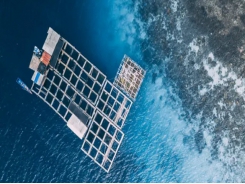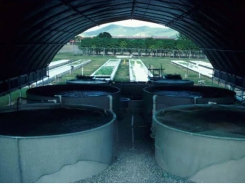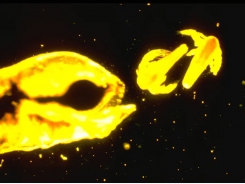Using echo-sound to estimate biomass in aquaculture

A new tool that uses echo-sounding to generate more precise estimations of the number and size of the fish in a pen is being developed by researchers.
Trialling the use of echo-sound to estimate fish biomass at a salmon farm in Norway, September 2020. Photo: SINTEF Ocean
Reliable methods for estimating the biomass of fish in a cage remain a challenge in aquaculture. The most common approach involves taking on-site samples – a costly, time-consuming and inaccurate method. More reliable methods are needed so that fish farmers can better manage their stock.
As part of the EU-funded PerformFISH project, researchers from SINTEF Ocean in Norway and the Hellenic Centre for Marine Research (HCMR) in Greece are testing the use of echo-sounder technology. This relies on regularly transmitting an acoustic pulse and analysing the return signal after it has bounced off one or several targets. Time intervals between transmission and reception, as well as signal intensity, are analysed.
This is a similar approach to the one used in sonar systems. It is already used in fish finders for commercial or recreational fishing and is now being applied more and more to aquaculture. However, the aquaculture context poses new challenges.
As Dr Walter Caharija, lead researcher from SINTEF Ocean explains: “In the open water, echo-sounding technology is used to find shoals of fish. They might give some estimate of the size of a shoal, but it’s the location that’s more important. In aquaculture, fish farmers already know where their fish are located but it is important to know the density of fish in the cage. In a 3D marine environment, with hundreds of fish swimming in all directions, it is difficult to get a good head count!”
Kongsberg Maritime, a renowned echo-sounder provider and manufacturer, is showing great interest in our PerformFISH activities and we are having a mutually beneficial and productive dialogue
The research team is conducting trials to understand how echo-sounders interact with the layers of fish that are found in a typical aquaculture cage. The main challenge is to account for a shadowing effect: some fish are hard to detect because they are hidden behind other fish in the cage.
The researchers have conducted experiments using two small test cages, each containing a known number of fish. They placed the cages at different distances from each other and from an echo-sounder, and then measured the echogram results produced from the interaction of the echo-sounder with the fish. By comparing these raw echogram results to the real fish density in the cages, the team can calibrate the tool so that it will provide a reliable estimate of fish density for fish farm managers.
Dr Caharija continued: “We are making exciting progress and I am looking forward to developing this further. We are building a foundation from which we are learning how to utilize an echo-sounder to better estimate biomass in a production net pen. Together with HCMR, our partner from Greece, our next steps will involve further data analysis and refining our methods before we move to more concrete dissemination and exploitation plans.”
His colleague, Espen Eilertsen, added: “Kongsberg Maritime, a renowned echo-sounder provider and manufacturer, is showing great interest in our PerformFISH activities and we are having a mutually beneficial and productive dialogue.”
Có thể bạn quan tâm
Phần mềm

Phối trộn thức ăn chăn nuôi

Pha dung dịch thủy canh

Định mức cho tôm ăn

Phối trộn phân bón NPK

Xác định tỷ lệ tôm sống

Chuyển đổi đơn vị phân bón

Xác định công suất sục khí

Chuyển đổi đơn vị tôm

Tính diện tích nhà kính

Tính thể tích ao hồ




 Shrimp exporters eye over US$4 billion in export…
Shrimp exporters eye over US$4 billion in export…  Are we close to replacing Artemia as a…
Are we close to replacing Artemia as a…